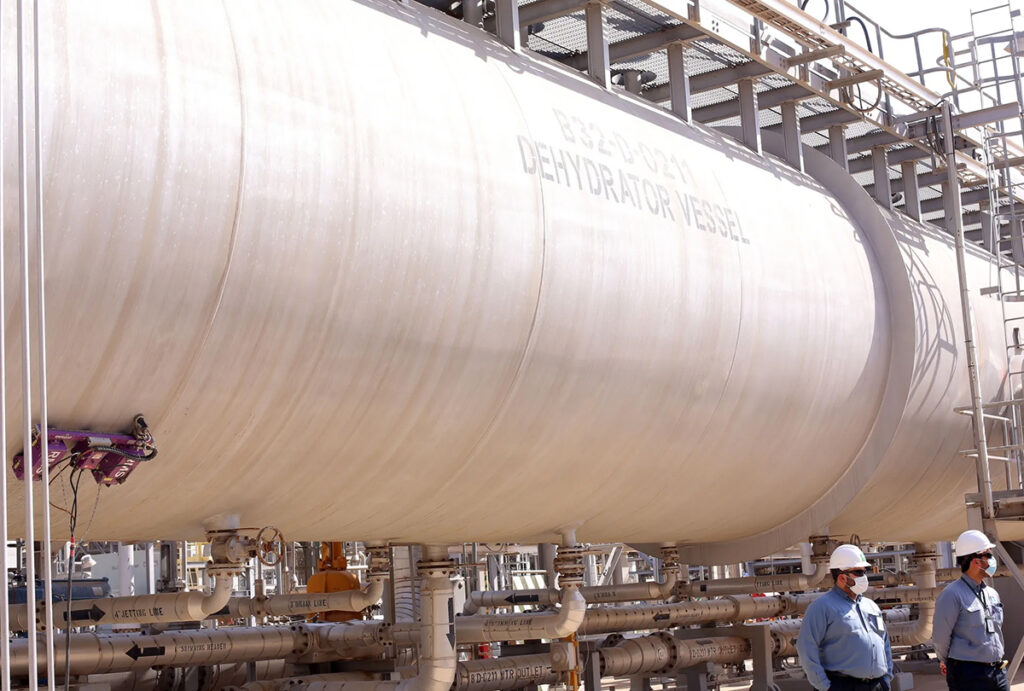The International Energy Agency forecasts a surplus approaching 3 million barrels a day by next year.
By Grant Smith

Saudi Arabian Oil Co. workers in the Khurais oil field. Photographer: Maya Sidiqqui/Bloomberg
The impact of this year’s dramatic policy reversal by OPEC+ is now becoming clear.
This week’s reports from two of the oil industry’s bedrock institutions illustrate the effects of the cartel’s move — finalized earlier this month — to fast-track the revival of halted production.
The International Energy Agency almost tripled the size of the global surplus it anticipates this year since Saudi Arabia and partners started opening the taps in April. That forecast now stands at just under 1.8 million barrels a day.
For next year, the IEA anticipates a record glut of nearly 3 million barrels a day, even surpassing — in annual average terms — the stockpile flood unleashed during the Covid-19 pandemic in 2020.
The IEA’s American counterpart, the US Energy Information Administration, boosted estimates for the overhang from October through March by two-thirds in its latest monthly update.
Admittedly, the global oil demand outlook has wobbled during this period, assailed by China’s economic woes and US President Donald Trump’s tariff onslaught.
But the adjustment has primarily come about on the supply side of the ledger and, for that, the Organization of the Petroleum Exporting Countries and its partners are chiefly responsible.
The group’s champions will hail this as a success: OPEC+ managed to green-light the addition of 2.5 million barrels a day this year at the same time analysts said it wouldn’t be able to add any without triggering a massive price crash.
Oil bulls could argue that predictions of coming gluts have proved unfounded before and that, for all the current hoopla, inventories in Organization for Economic Cooperation and Development countries remain near their lowest in decades.
Crude prices will continue finding a floor, they’ll contend, as long as China remains ready to scoop up bargain barrels to fill its capacious strategic reserves.
Nonetheless, the months ahead are set to test OPEC’s resolve.
If, as officials say, the Saudis are committed to recouping market share, then they’ll be willing to ride out the coming price storm.
But with Brent futures below $66 a barrel even before the looming stockpile wave hits, Riyadh could choose the option — signaled earlier this month — of reversing course.
–Grant Smith, Bloomberg News
Share This:




 CDN NEWS |
CDN NEWS |  US NEWS
US NEWS 


























